Stadiums are more than just venues for soccer games; they’re iconic structures that bring together fans from all over the world, creating unforgettable experiences. The largest soccer stadiums on the planet stand out not only for their massive capacities but also for their unique designs, historical significance, and the passionate energy they hold within their walls. From classic arenas with decades of history to modern marvels, each of these stadiums has a story that resonates with fans everywhere.
Rungrado 1st of May Stadium, North Korea
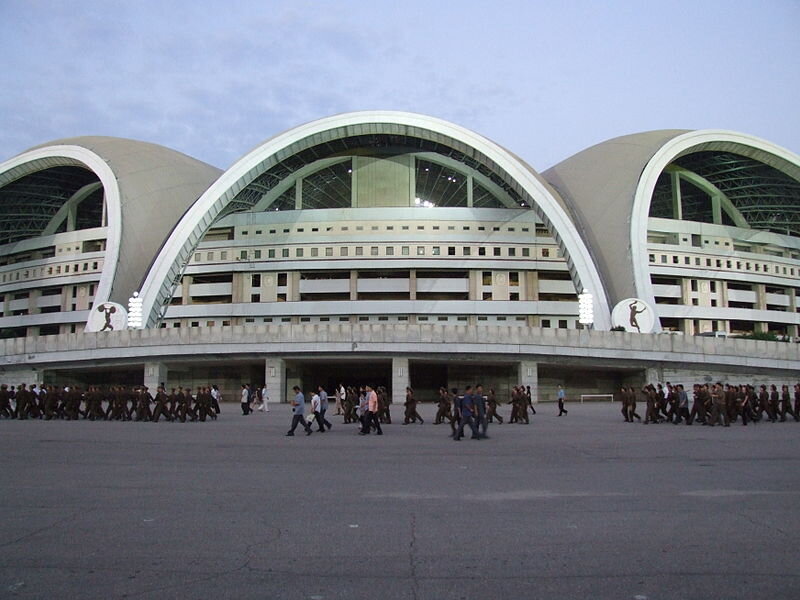
The Rungrado 1st of May Stadium in Pyongyang, North Korea, is the world’s largest soccer stadium, boasting a massive capacity of 114,000 spectators. Opened in 1989, it features a distinct scalloped roof designed to resemble a magnolia blossom. The multi-purpose stadium spans over 20 hectares, incorporating numerous training fields and a gym. Despite its primary use for soccer, it also hosts other events like gymnastics and parades. It’s widely known for hosting the Arirang Mass Games, a highly synchronized, large-scale performance. The venue’s imposing structure dominates the skyline, symbolizing national pride. Its design and scale make it one of the most recognizable stadiums worldwide.
Michigan Stadium, USA
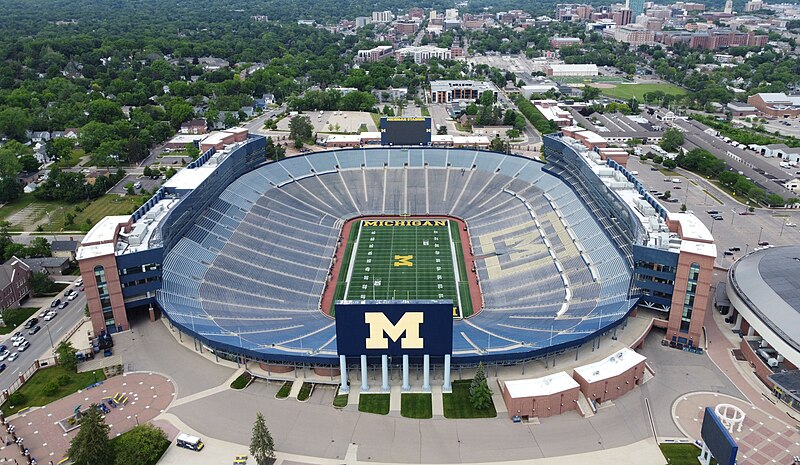
Located in Ann Arbor, Michigan, the Michigan Stadium is also known as “The Big House,” holding up to 107,601 spectators. Originally built in 1927, it was primarily designed for American football but has since hosted several large soccer events. The stadium’s vast seating arrangement includes both a traditional bowl and additional suites, enhancing its overall capacity. A renovation in 2010 expanded its seating, making it suitable for major international soccer matches. This venue witnessed record-breaking attendance during a friendly game between Manchester United and Real Madrid in 2014. While it’s primarily a college football venue, its impressive capacity makes it a contender among the largest stadiums worldwide. Michigan Stadium is iconic for its grand size and electrifying atmosphere.
Melbourne Cricket Ground (MCG), Australia
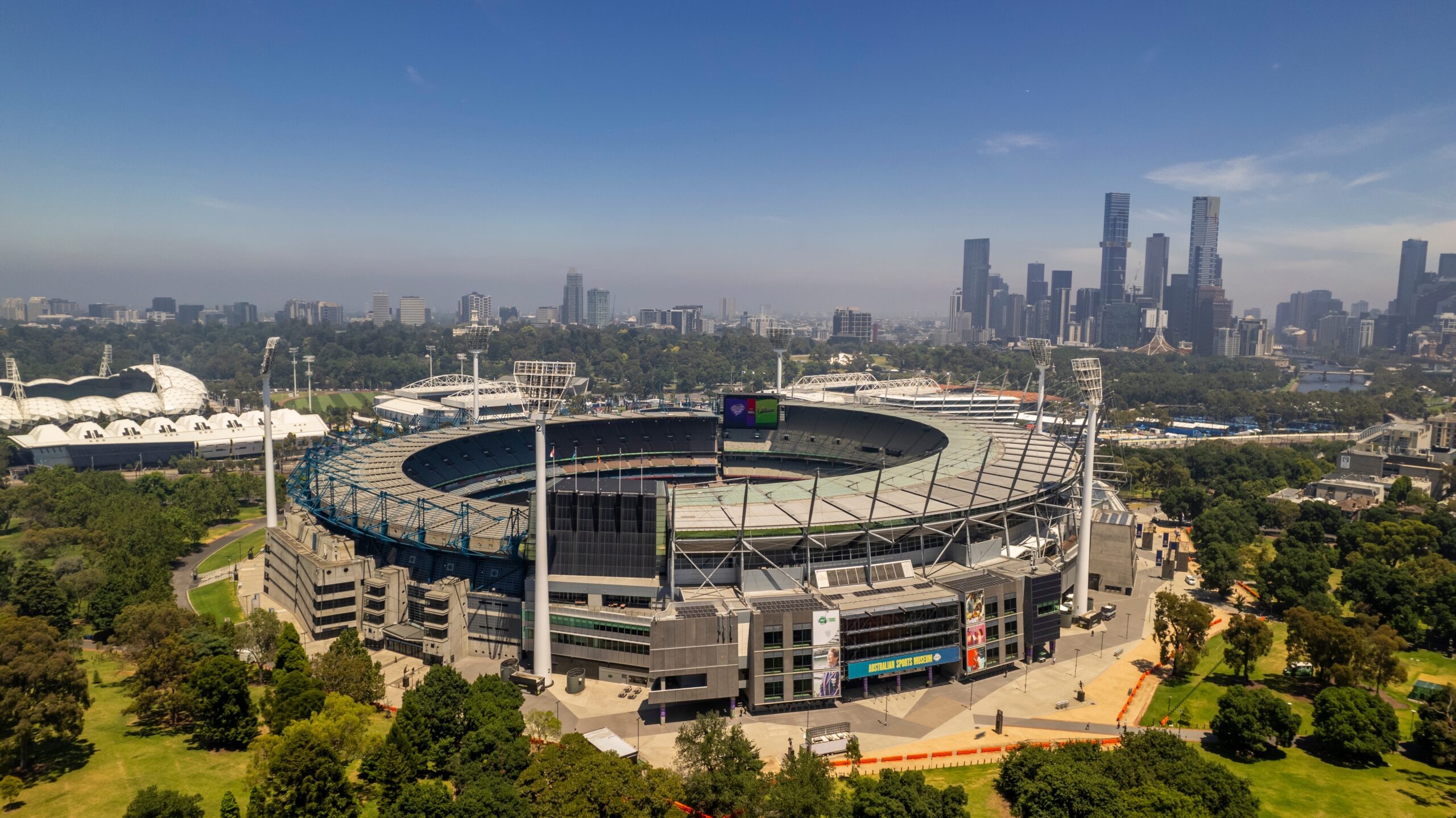
The Melbourne Cricket Ground, often simply referred to as the “G,” is located in Melbourne, Australia, and can host up to 100,024 fans. Known for cricket, it has also played host to major soccer events, including friendly matches and Olympic games. Built in 1853, MCG is one of the oldest stadiums, with a rich history that complements its modern renovations. Its seating is distributed over three levels, providing clear views from all angles. MCG is cherished for its distinctive light towers and spacious interior, enhancing the experience for spectators. Though not dedicated solely to soccer, it remains among the largest venues for the sport globally. Its unique history and seating capacity make it a significant landmark in sports.
Camp Nou, Spain
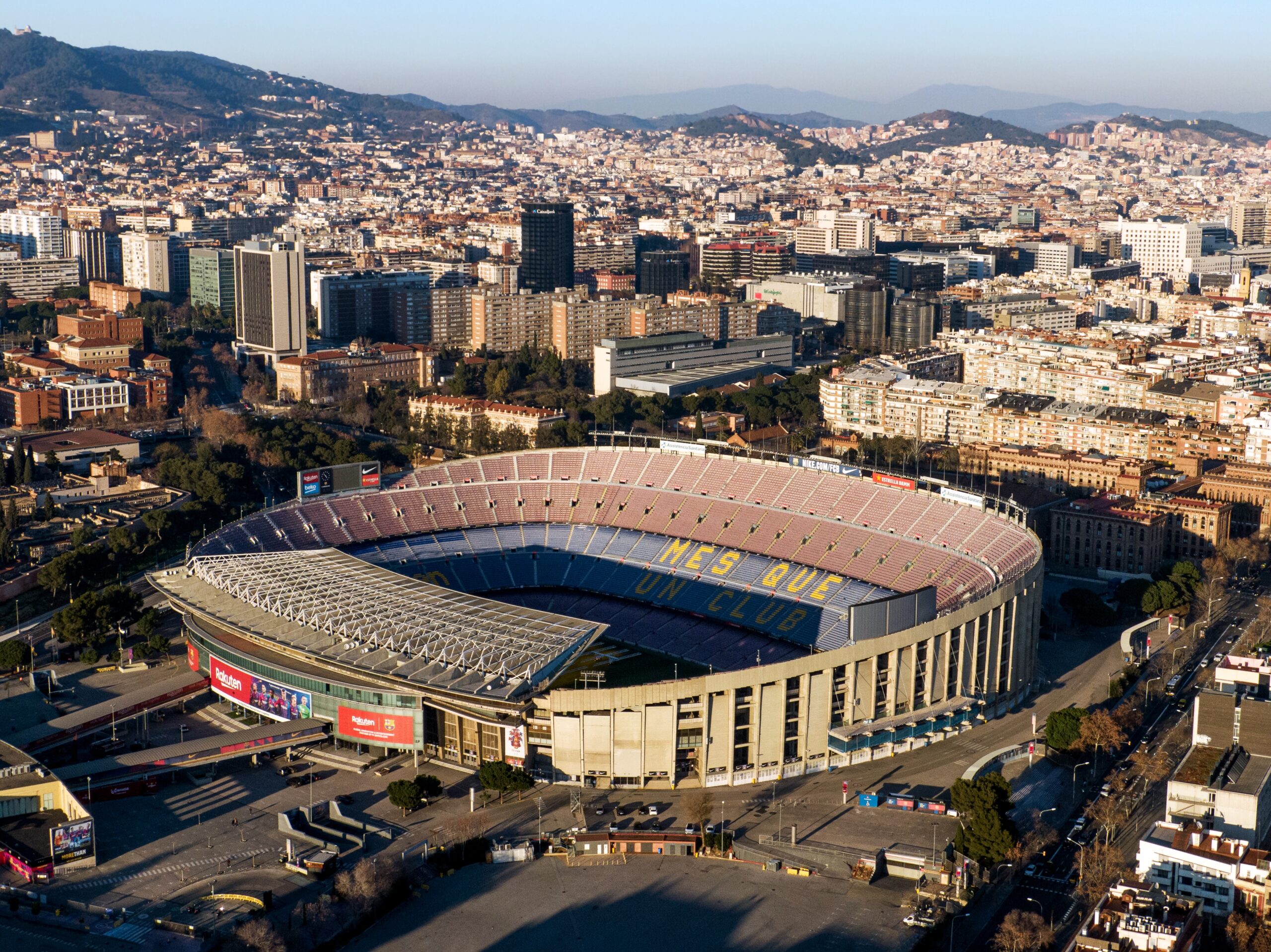
Barcelona’s Camp Nou stadium stands as Europe’s largest, holding a capacity of 99,354. Opened in 1957, this stadium is home to FC Barcelona and embodies Catalonia’s passion for soccer. Its sleek, bowl-like design allows for excellent sightlines, making every seat a great view of the field. Throughout its history, Camp Nou has hosted numerous international tournaments, including World Cup and Champions League matches. The stadium’s upcoming renovation will further modernize it, expanding seating while adding advanced facilities. Camp Nou is also a cultural symbol, with its structure featuring the iconic Catalan flag colors. It’s an iconic stadium that defines the spirit of European soccer.
FNB Stadium, South Africa

Known as Soccer City, the FNB Stadium in Johannesburg has a capacity of 94,736, making it the largest in Africa. Built in 1989 and extensively renovated for the 2010 FIFA World Cup, the stadium’s design resembles an African calabash. Its colorful exterior lights up at night, symbolizing a glowing pot above a fire. During the World Cup, it hosted both the opening match and the final, solidifying its place in soccer history. The seating arrangement allows fans an unobstructed view of the field, creating an intimate yet grand experience. Additionally, the stadium holds cultural significance, as it was the site of Nelson Mandela’s memorial. This venue is a testament to South Africa’s love for soccer and unity.
Rose Bowl Stadium, USA

The Rose Bowl in Pasadena, California, can accommodate up to 92,542 fans. Built in 1922, it is one of the oldest and most celebrated stadiums in the United States. Known for hosting the FIFA World Cup final in 1994, it has witnessed some of soccer’s most historic moments. The stadium’s unique horseshoe shape gives it a distinct look and exceptional acoustics. In addition to soccer, it also serves as a venue for college football and concerts. The Rose Bowl’s scenic backdrop, surrounded by the San Gabriel Mountains, adds to its allure. It remains an iconic venue, known worldwide for its history and beautiful setting.
Wembley Stadium, England
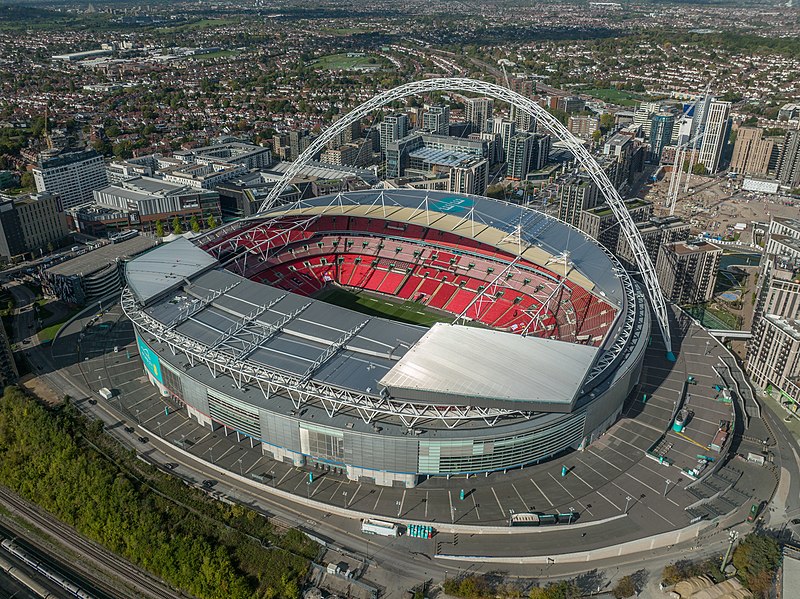
Wembley Stadium in London is one of the most iconic stadiums, with a seating capacity of 90,000. Rebuilt in 2007, it features a unique 133-meter-tall arch that has become a London landmark. Known as the home of English soccer, it regularly hosts FA Cup finals, international matches, and major concerts. The stadium’s modern design includes a retractable roof, ensuring events continue in any weather. Its tiered seating provides excellent visibility, allowing fans to feel close to the action. Wembley’s rich history includes hosting the 1966 World Cup final, making it sacred ground for soccer fans. The stadium’s blend of tradition and innovation sets it apart.
Gelora Bung Karno Stadium, Indonesia
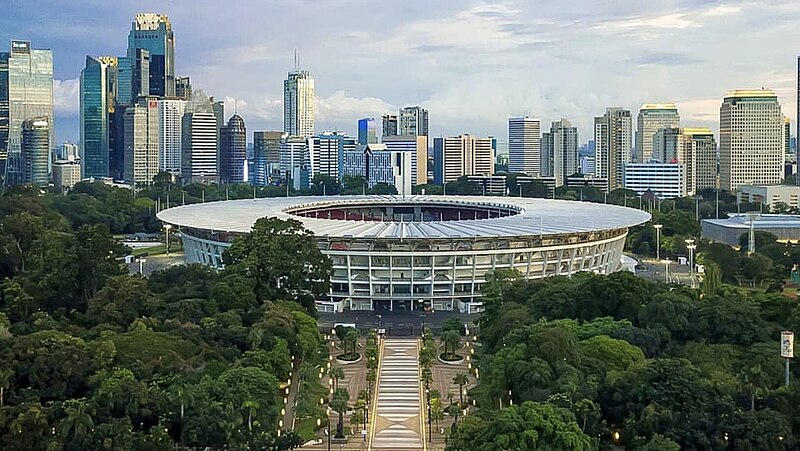
Located in Jakarta, Indonesia, the Gelora Bung Karno Stadium can hold 88,306 spectators. Built in 1962, it was originally constructed for the Asian Games and named after the country’s first president. Its design features a distinctive open canopy roof, reflecting traditional Indonesian architecture. Over the years, it has hosted numerous soccer tournaments and is home to the Indonesian national team. The recent renovation upgraded seating and added modern facilities, maintaining its status as a premier venue. Its capacity and design make it one of the largest stadiums in Asia. This stadium remains a cultural and sports landmark in Indonesia.
Estadio Azteca, Mexico
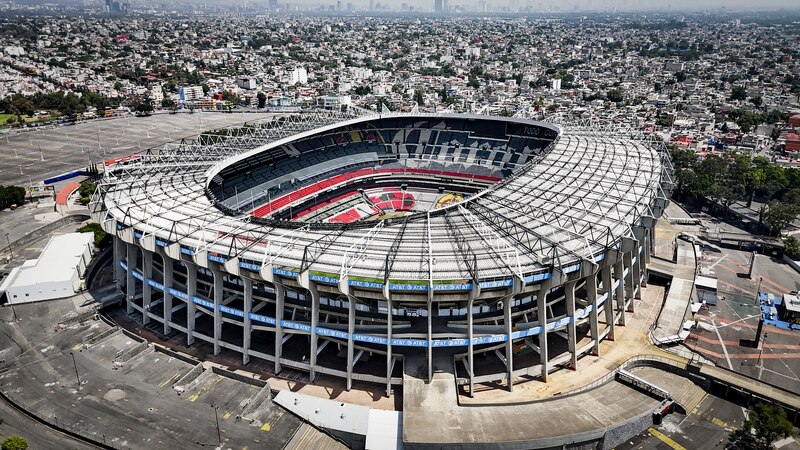
Estadio Azteca in Mexico City has a capacity of 87,523 and is one of the most historic stadiums in the world. Opened in 1966, it is the only stadium to have hosted two FIFA World Cup finals. The venue’s impressive, tiered seating provides clear views from all levels, enhancing the match-day experience. Known for its vibrant atmosphere, the Azteca is where fans witnessed the famous “Hand of God” goal by Maradona. The stadium’s modern updates ensure it remains at the forefront of global soccer venues. Its history and architectural grandeur make it an iconic stadium. Estadio Azteca is a beloved symbol of Mexican soccer passion.
Bukit Jalil National Stadium, Malaysia
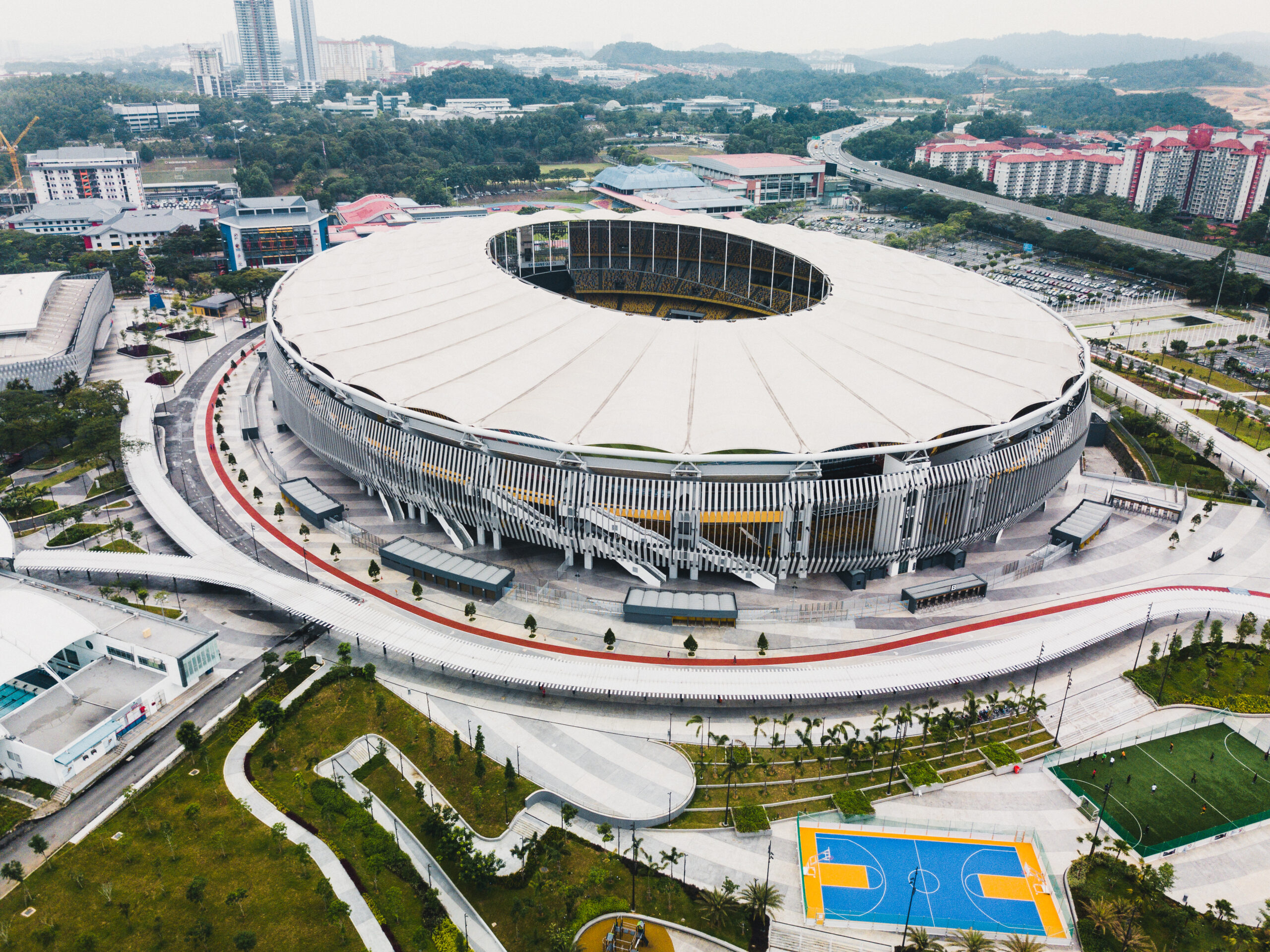
With a capacity of 87,411, Bukit Jalil National Stadium in Kuala Lumpur is the largest in Southeast Asia. Opened in 1998, it was built for the Commonwealth Games and has since hosted major soccer events. The stadium’s design includes multiple tiers and a roof that covers most seats, protecting fans from rain. It’s known for its vibrant atmosphere during soccer matches, where Malaysian fans show their support. Renovations in recent years have modernized the facility, adding high-quality seating and LED screens. The venue is a focal point for Malaysia’s sporting events and international tournaments. Bukit Jalil stands out for its size and impressive design.
Salt Lake Stadium, India

Salt Lake Stadium, or Vivekananda Yuba Bharati Krirangan, is located in Kolkata, India, and holds up to 85,000 fans. Built in 1984, it was once the largest soccer stadium before renovations reduced its capacity. Its oval-shaped design provides a panoramic view, creating an immersive experience for spectators. Known for passionate crowds, it hosts both local games and international matches. The stadium’s historical significance in Indian soccer is immense, with legendary players gracing its field. A recent renovation added modern facilities and comfortable seating, improving fan experience. Salt Lake Stadium remains a vibrant hub for Indian soccer.
Signal Iduna Park, Germany
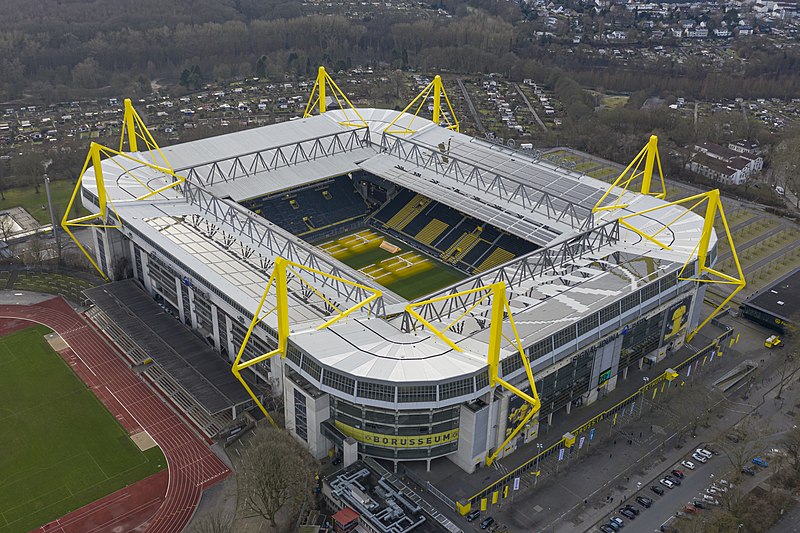
Signal Iduna Park, also known as Westfalenstadion, is in Dortmund, Germany, and seats up to 81,365 fans. It’s home to Borussia Dortmund and is famous for its electric atmosphere, especially in the “Yellow Wall,” Europe’s largest terrace with over 25,000 standing spaces. Built in 1974 and expanded over the years, it’s now Germany’s largest stadium. The design focuses on spectator immersion, with close, steep seating that brings fans right up to the action. This venue has hosted major games, including the 2006 FIFA World Cup. Signal Iduna Park is also known for its iconic yellow-and-black exterior and supportive fan base. It’s a place where soccer passion truly comes alive.
Stade de France, France
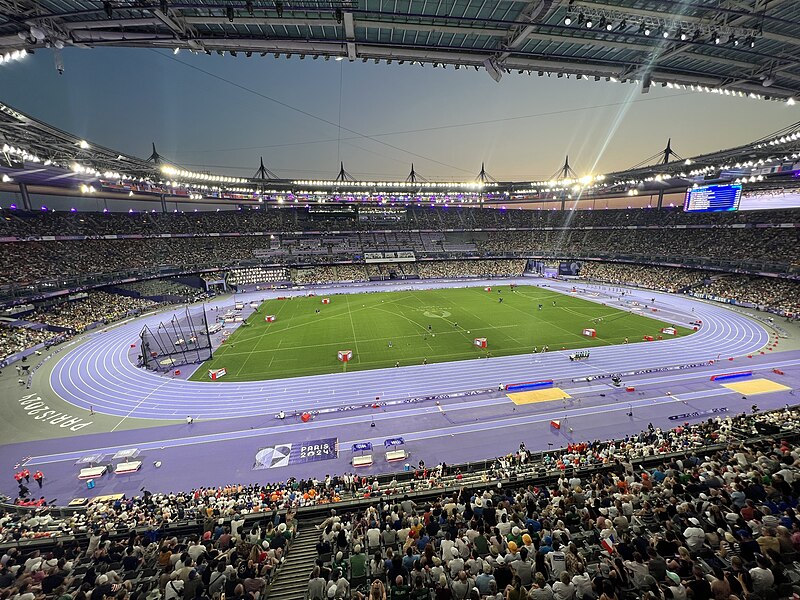
Located in Saint-Denis, a suburb of Paris, the Stade de France can host 81,338 spectators. Opened in 1998 for the FIFA World Cup, it has since hosted numerous international events, including the Rugby World Cup and Olympic games. The stadium features a unique oval shape and a movable roof, adapting to different events and providing comfortable viewing in any weather. Known as the home of the French national team, its walls echo with cheers of historic French victories. The Stade de France’s location and size make it a prime venue in Europe. It’s renowned for its grand structure and dynamic design.
Santiago Bernabéu Stadium, Spain

Santiago Bernabéu Stadium, located in Madrid, Spain, holds 81,044 fans and is home to the prestigious Real Madrid football club. Since opening in 1947, it has become a landmark for Spanish and European soccer. The stadium’s distinctive design, with towering stands and modernized facilities, offers fans unparalleled views. Currently undergoing renovation, it will feature a retractable roof and state-of-the-art facilities upon completion. Known for hosting UEFA Champions League finals, it’s one of the most celebrated venues worldwide. The Bernabéu’s aura and rich history make it a must-visit for soccer enthusiasts. It’s a testament to the legacy of Real Madrid’s storied success.
MetLife Stadium, USA
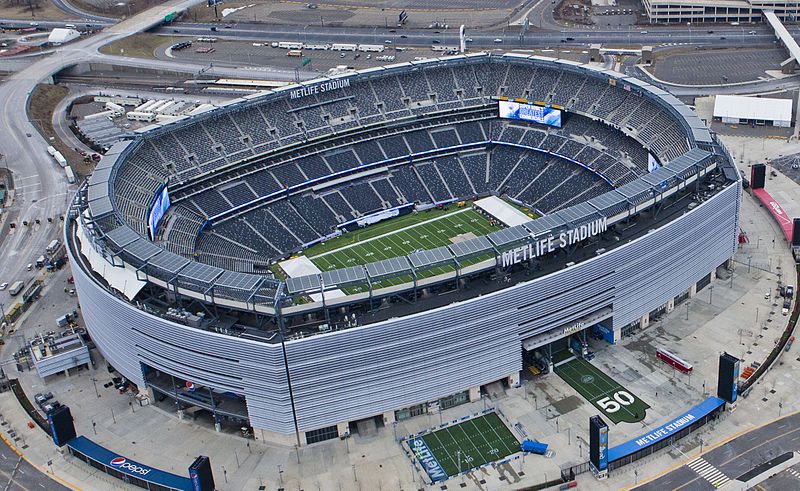
MetLife Stadium in East Rutherford, New Jersey, is the largest in the New York metropolitan area, with a seating capacity of 82,500. Opened in 2010, it serves as the home field for both the New York Giants and New York Jets but frequently hosts major international soccer events. Its open-air design and modern amenities make it a premier venue for sports fans. In addition to its extensive seating, it includes over 200 luxury suites, offering a premium viewing experience. The stadium’s high-definition video screens and advanced audio systems enhance spectator engagement. MetLife Stadium is celebrated for its architectural innovation and versatility.
Croke Park, Ireland
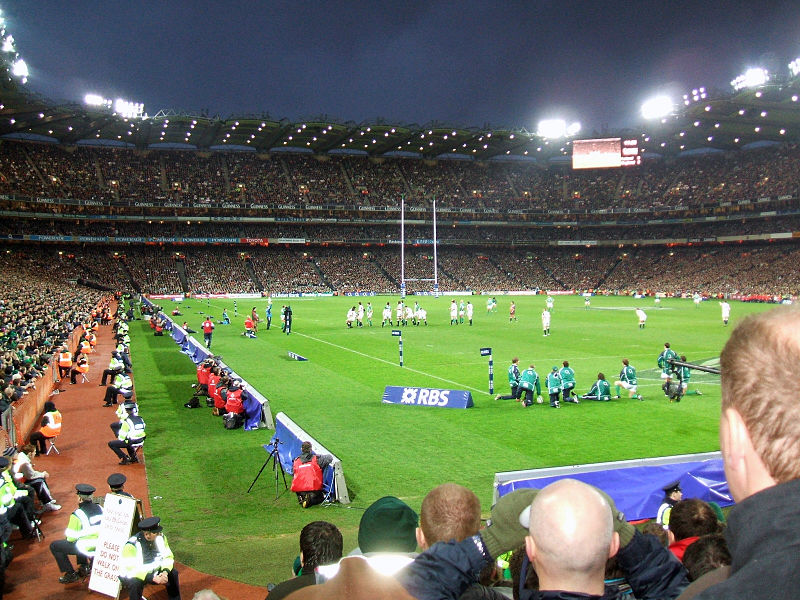
Dublin’s Croke Park, with a capacity of 82,300, is one of Europe’s largest stadiums and the main venue for Gaelic sports. Although primarily used for Gaelic football and hurling, it also hosts international soccer matches. Its unique design features tiered seating and a prominent roof, making it easily recognizable. First opened in 1913, it’s steeped in Irish history, playing a role in Ireland’s struggle for independence. The venue offers fans a thrilling experience, with clear views from every seat. Modern upgrades have enhanced its facilities while preserving its historic charm. Croke Park is an iconic Irish venue with deep cultural roots.
San Siro, Italy
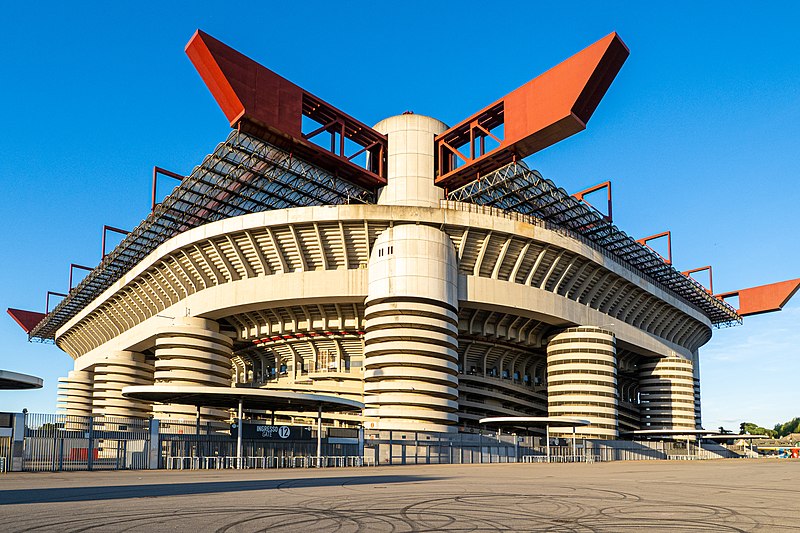
San Siro, also known as Stadio Giuseppe Meazza, is located in Milan, Italy, and accommodates 80,018 fans. It’s shared by two renowned clubs, AC Milan and Inter Milan, creating an intense atmosphere during local derbies. Opened in 1926, the stadium has a distinct rectangular shape with towering stands on each side. Known for its red, spiral ramps and imposing exterior, San Siro has hosted several UEFA Champions League finals. Planned renovations aim to modernize the facility, adding a retractable roof and upgraded amenities. The stadium’s history and design make it an Italian landmark. San Siro captures the essence of Milanese soccer passion.
Murrayfield Stadium, Scotland

Located in Edinburgh, Scotland, Murrayfield Stadium holds up to 67,144 spectators. Though primarily a rugby venue, it hosts major international soccer matches and concerts. Built in 1925, its seating offers excellent views from all angles, adding to its versatility. The stadium’s open design enhances acoustics, making it ideal for large crowds and lively atmospheres. Modern renovations have included improved seating and digital screens, keeping it up to date. Its historic appeal and central location make it a cherished venue. Murrayfield reflects Scotland’s passion for sports, drawing fans from all around.
Maracanã Stadium, Brazil
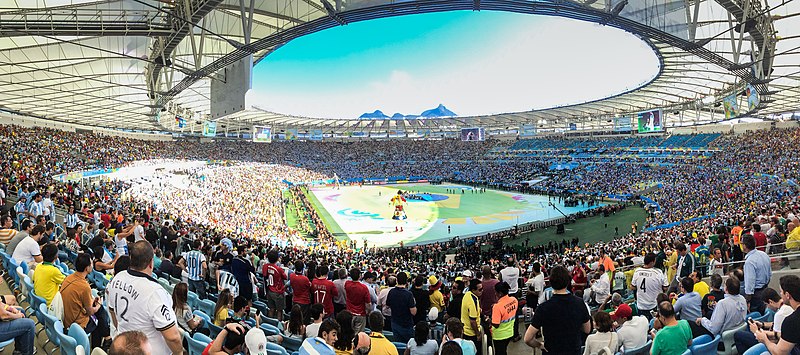
The Maracanã Stadium, located in Rio de Janeiro, Brazil, has a capacity of 78,838 and is one of the world’s most famous stadiums. Opened in 1950 for the FIFA World Cup, it became iconic after hosting the final with an attendance of 199,854—an all-time record. Known for its circular shape and steep stands, it gives fans a close view of the action. A recent renovation upgraded its seating and added a modern roof, ensuring comfort and safety. The Maracanã continues to host major soccer events, including the World Cup final in 2014. It’s a cultural symbol in Brazil, representing the nation’s soccer heritage. The Maracanã is a timeless stadium cherished by fans worldwide.
Olympiastadion, Germany
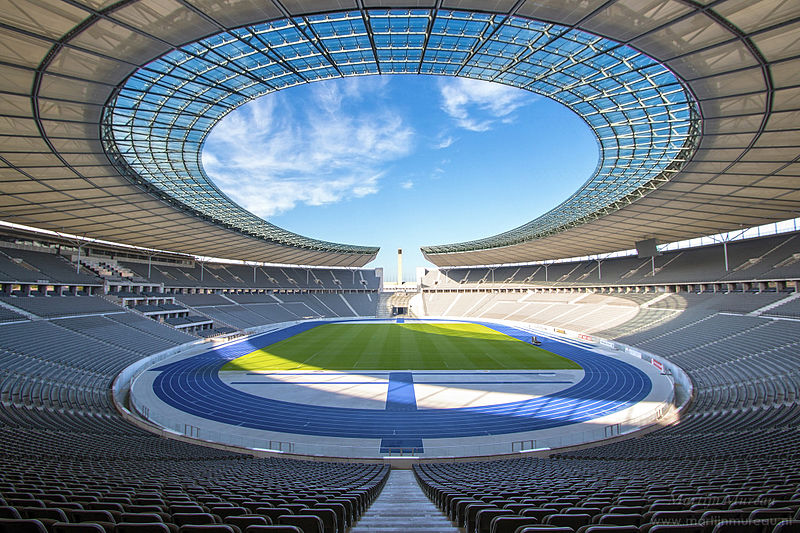
Berlin’s Olympiastadion has a capacity of 74,475 and is known for its unique architectural blend of historical and modern elements. Originally built for the 1936 Olympics, it underwent a major renovation before the 2006 FIFA World Cup. Its classic oval design, paired with a partial roof, creates a grand viewing experience. The stadium has hosted historic events, including World Cup finals and European tournaments. Modern amenities and advanced digital displays enhance the spectator experience, adding a contemporary touch. Olympiastadion’s heritage and upgrades make it a world-class venue. Its presence reflects Berlin’s legacy in international sports.
This article originally appeared on Rarest.org.
More From Rarest.Org
Phones have come a long way from their earliest forms to the powerful smartphones we use today. This article explores some of the oldest phones in history, from ancient acoustic devices to the first telephones and early mobile phones. Read more.
The largest companies in the world today are giants in technology, finance, and energy, each with a unique history and substantial influence on global markets. These companies are ranked by market value, which reflects not only their financial success but also their impact on various industries and everyday life. Read more.
Fungi are known for thriving in some of the most unexpected places, adapting to environments that range from forest floors to decaying wood and even the frozen landscapes of winter. These resilient organisms play a vital role in their ecosystems by breaking down organic material, spreading spores, and forming symbiotic relationships with plants and animals. Read more.



